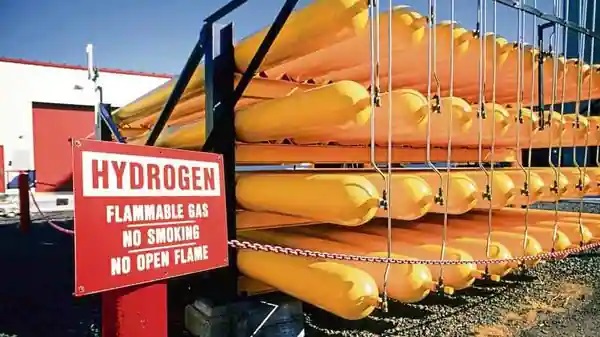
The World Wants Green Hydrogen, Namibia Says It Can Deliver
Alexandra Wexler, The Wall Street Journal
Several global players expressed interest after Namibia’s government put out a request for proposals to develop two separate but adjacent sites, where it envisions massive desalination plants. The sites would also include wind and solar farms as well as electrolysers—systems that use electricity to split water into hydrogen and oxygen—which would be used to produce green hydrogen and ammonia for export.
Namibia received nine bids from six developers for the two sites, including South Africa’s Sasol Ltd., Australia’s Fortescue Metals Group Ltd. and Germany’s Enertrag AG—a shareholder in Hyphen Hydrogen Energy (Pty) Ltd., which has been awarded both sites.
Hyphen, a project development company created to develop, build and operate green hydrogen production facilities in Namibia, says the $9.4 billion project is targeting 300,000 metric tons of green hydrogen production a year from 5 gigawatts of renewable generation capacity by 2030.
The international community is also embracing the ambitious plans. Namibia’s government has been invited to present their post-Covid economic recovery plan—in which green hydrogen plays a key role—at January’s World Economic Forum in Davos, Switzerland, for the first time.
Ground zero for the project is Lüderitz, a sleepy seaside town dotted with German art deco architecture. The project sites are about an hour’s drive into the surrounding desert, with each massive block of rolling sand and scrub brush approximately 675 square miles in size.
The Lüderitz Town Council estimates that the approximately 30,000 population will grow by 3,000 for each block and is already making plans to expand services like water, sewage and build more housing.
“The first diamond rush was in 1900,” said Ignatius Tjipura, the council’s technical manager. “Now we are talking about a green hydrogen rush.”
In the global race for green hydrogen, Namibia is the latest sub-Saharan African country with major natural assets to position itself as a potential green energy hub.
The central African nation of Gabon has struck a deal under which it is paid to preserve its vast forests to act as a carbon sink, which absorb more than 100 million tons of the gas annually. In Kenya, 365 wind turbines that make up the country’s Lake Turkana Wind Power Project now account for about 17% of installed electricity capacity in the country.
Namibia has advantages beyond wind and solar: The country ranks sixth out of 49 countries in sub-Saharan Africa on Transparency International’s Corruption Perceptions Index.
“It’s relatively easy to do business in Namibia,” said Margaret Mutschler, director at Tumoneni Hydrogen Energy, a Namibian company owned by CWP H1 Energy, which is part of the CWP group, a renewable energy development company that bid on one of the green hydrogen sites.
The government has also decided to step back and let the private sector lead the green hydrogen projects, rather than try to manage them itself.
“We don’t believe that [government] should be the driver. The private sector can do a better job,” said Ipumbu Shiimi, Namibia’s Minister of Finance.
Tobias Bischof-Niemz, head of the new energy solutions division at Enertrag, which won the bids for both blocks in partnership with Nicholas Holdings, an international sub-Saharan Africa focused strategic infrastructure investor and project developer, said Namibia is well-positioned to export green hydrogen to South Africa to meet its larger neighbor’s growing energy needs and decarbonization goals. South Africa has been pummeled by frequent power outages.
South Africa’s petrochemical and energy major Sasol also bid for both sites through Namibia’s request for proposals and is the largest synthetic aviation fuel producer in Africa. Sasol declined to comment specifically on its bids. But the Namibian government has received interest from various developers including Sasol to explore the potential of building a pipeline between the project in Namibia and Sasol’s plant in Secunda, nearly 1,000 miles away in South Africa, according to James Mnyupe, economic adviser to Namibia’s president.

 AEI is an Africa focused publication, conceived as a response to the skeletal information available on Africa’s energy & Infrastructure. AEI is one of Africa’s trusted knowledge source for Energy & Infrastructure news.
AEI is an Africa focused publication, conceived as a response to the skeletal information available on Africa’s energy & Infrastructure. AEI is one of Africa’s trusted knowledge source for Energy & Infrastructure news.